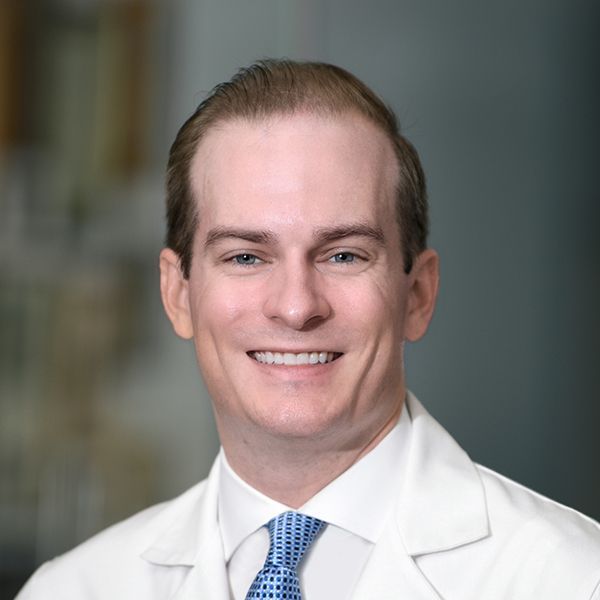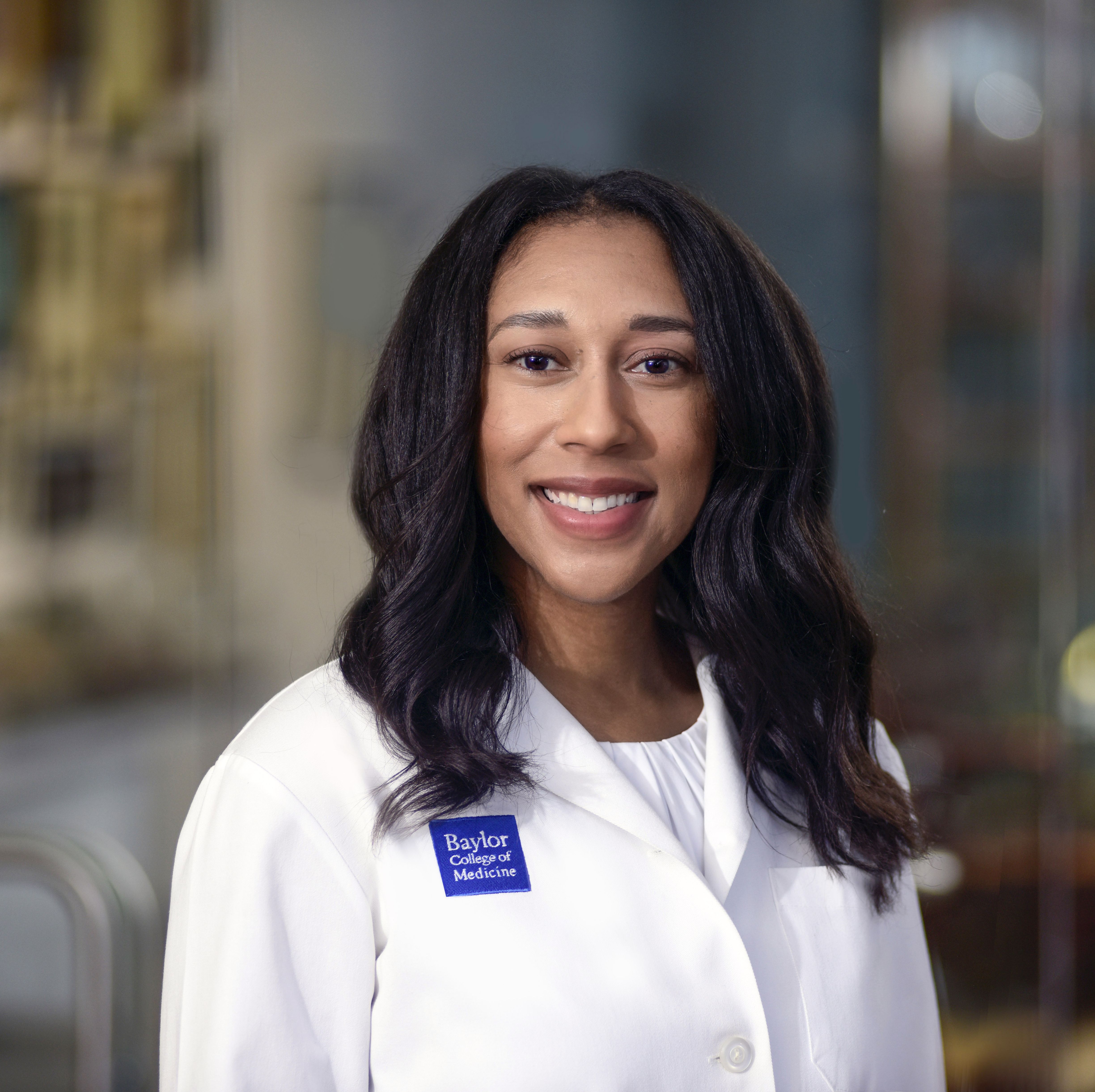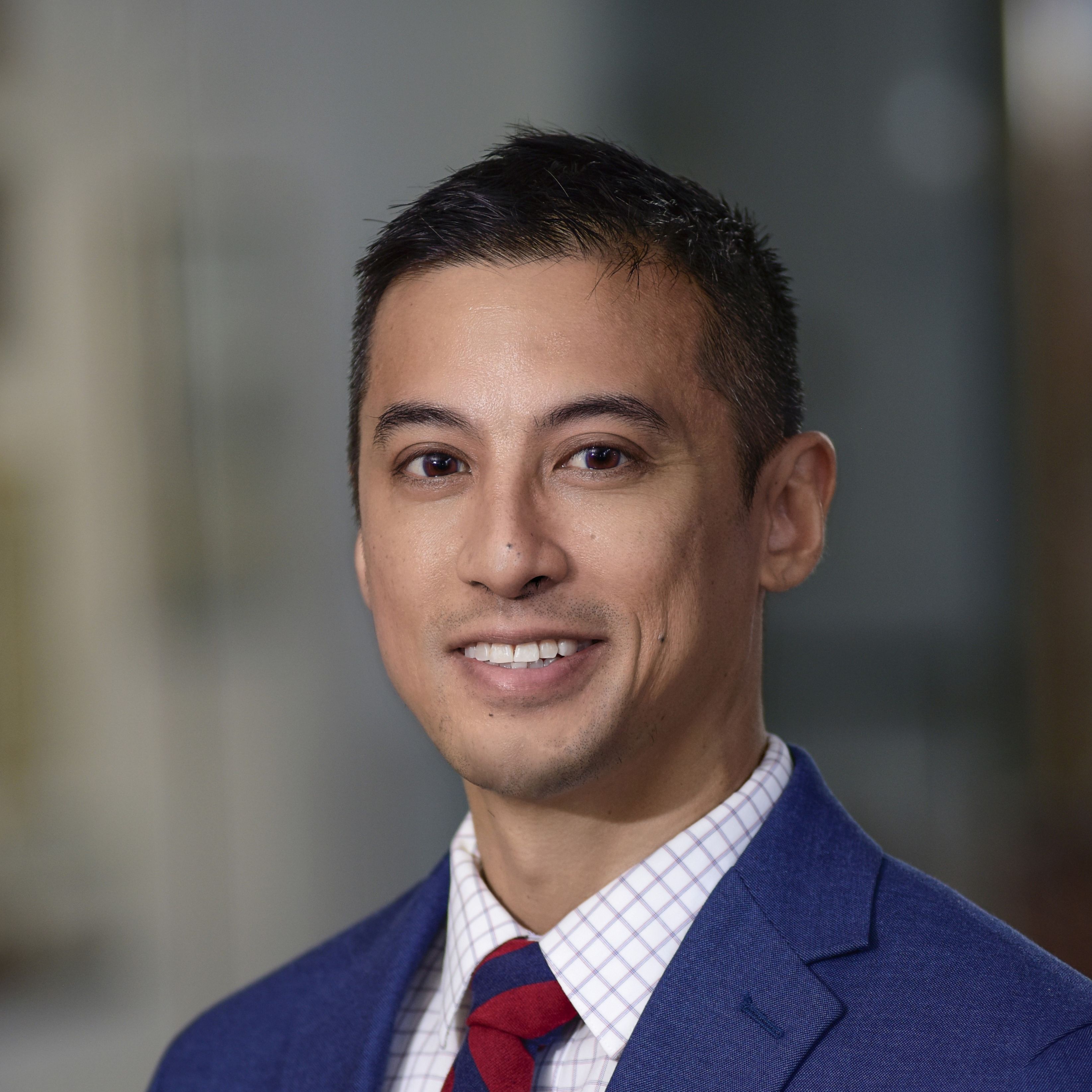St. Luke's Health joins CommonSpirit.org soon! Enjoy a seamless, patient-centered digital experience. Learn more

Orthopedics — Baylor St. Luke's Medical Center
A Message From Dr. Douglas Dirschl
The Musculoskeletal Service Line at Baylor St. Luke’s Medical Center is composed of dedicated medical and surgical specialists whose singular focus is treating patients with muscle, nerve, bone, and joint injuries or disorders through a highly collaborative approach, Our fundamental goal is to return people to their active lives as rapidly as possible. Orthopedic care at Baylor St. Luke’s Medical Center is provided almost exclusively by physicians who are full-time faculty members at the Baylor College of Medicine’s Joseph Barnhart Department of Orthopedic Surgery.
Below, you will find descriptions of cutting-edge orthopedic surgical care provided at Baylor St. Luke’s Medical Center. All efforts focus on individualized patient treatment through collaborative, multidisciplinary teams of experts utilizing innovative techniques and protocols that translate to improved patient outcomes.
A critical feature that distinguishes the orthopedic surgical services at Baylor St. Luke’s Medical Center from others locally and nationally is our unrelenting effort to improve through innovation and thoughtful incorporation of translational scientific discoveries, often by our own Baylor College of Medicine investigators within the Center for Skeletal Medicine and Biology as well as the Rolanette and Berdon Lawrence Bone Disease Program of Texas. Ongoing work related to the determination of the mechanisms of bone development, repair, and aging is just one example.
Orthopedic surgery faculty, as well as those within the Musculoskeletal Service Line at Baylor St. Luke’s Medical Center, are national thought leaders who publish and lecture extensively, educating not only those in training but also their colleagues in practice around the world. They are the best, and they are here for you.
Sincerely,

Douglas Dirschl, MD
At Baylor St. Luke’s Medical Center, our hip and knee arthroplasty experts are leading the shift toward same-day joint replacements, a trend driven by significant advances in surgical techniques, enhanced pain management protocols, and technological innovations. The majority of our hip and knee replacement patients are enjoying the benefits of having their surgery done in an outpatient setting. By aligning innovative surgical techniques and technology with our patient’s goals, our surgeons are getting patients back to their quality of life prior to being hindered by arthritis.
“The benefits of outpatient surgery are that patients get to go home the same day and sleep that night in their own bed with the comforts of home, ultimately increasing patient satisfaction without sacrificing safety,” states David Martin, M.D., one of our orthopedic joint replacement surgeons.
Through minimally invasive approaches, including partial knee replacements and anterior-approach hip arthroplasty, patients experience accelerated recovery times. Advanced navigation systems and robotic-assisted surgery platforms enable our team to achieve unprecedented precision in both primary arthroplasty and complex revision cases. "One of the benefits of robotic-assisted surgery is that we are able to see the ultimate outcome before even starting the surgery," explains Dr. Martin.
Dr. David Martin is an expert in hip and knee replacement, including partial, minimally invasive, robotic, and revision surgeries. He has undergone extensive sub-specialty training to offer advanced surgical techniques, including robotic-assisted and minimally invasive procedures, and same-day outpatient surgery. Dr. Martin is also a trusted referral source for other orthopedic surgeons, specializing in complex cases and revisions of prior surgeries.
Dr. Martin emphasizes that there is no cookie-cutter approach for all patients. “It’s important to take a personalized approach and understand where each patient is coming from, tackle their concerns, and offer a more tailored procedure that meets their individual needs. This leads to a smoother recovery following surgery,” states Martin.

Patients who suffer from neurogenic thoracic outlet syndrome (NTOS), a painful condition resulting from compression of the nerves, arteries, and veins in the lower neck and upper chest area, can find relief through a minimally invasive surgical treatment that is performed endoscopically rather than through more traditional approaches.
Traditionally NTOS has been treated with open surgery that entails large incisions, a harder recovery, and more complications, notes Adil Ahmed, M.D., assistant professor at Baylor College of Medicine, who specializes in the unique endoscopic approach. The minimally invasive surgery offers patients a quicker and safer recovery, with smaller incisions that are more aesthetically pleasing and have lower complications.
Baylor College of Medicine upper extremity specialists possess extensive knowledge and expertise in comprehensive care for other upper extremity injuries and disorders, including: hand and wrist injuries, fracture fixation, shoulder and elbow joint replacement, shoulder arthroscopy for rotator cuff and labral injury, elbow arthroscopy, management of elbow ligament injury and instability, forearm and hand trauma, nerve injury and repair of peripheral nerves and the brachial plexus, and microsurgery.
Dr. Candace Mason is an orthopedic surgeon specializing in hand, wrist, and elbow surgery. Dr. Mason’s expertise includes fracture repair, managing degenerative disorders, tendinopathy, and tendon injuries, and performing peripheral nerve decompression and repair. Dr. Mason tries to balance the standard of care and tried-and-true techniques along with innovations and treatments to ensure the best care for her patients. “What I think is important in providing care for patients is a holistic approach to care,” states Dr. Mason, “I think it’s essential to listen to the patient. I like the adage ‘Just listen to the patient, they’re telling you the diagnosis.’ I try to hear their whole story to decide the best step forward for their care.”

Expertise and sub-specialty training in various disciplines are necessary for providing comprehensive care for upper extremity injuries and disorders. Baylor College of Medicine upper extremity specialists are required to possess extensive knowledge and expertise in various areas including hand and wrist injuries, fracture fixation, shoulder and elbow joint replacement, shoulder arthroscopy for rotator cuff and labral injury, elbow arthroscopy, management of elbow ligament injury and instability, forearm and hand trauma, nerve injury and repair of peripheral nerves and the brachial plexus, as well as microsurgery.
Adil Ahmed, M.D., assistant professor at Baylor College of Medicine, further offers a unique, minimally invasive surgical treatment for neurogenic thoracic outlet syndrome (NTOS) that is performed endoscopically. “Traditionally NTOS has been treated with large open surgery that’s quite morbid for patients,” explains Dr. Ahmed, “this means large incisions, harder recovery, and more complications. By offering this surgery endoscopically, patients have a quicker and safer recovery, with smaller incisions that are more aesthetically pleasing and have lower complications.”
Additionally, Dr. Ahmed is an expert in peripheral nerve and brachial plexus surgery, offering treatment with nerve repair, nerve grafting, nerve transfers, and tendon transfers.
Dr. Ahmed also performs tendon transfers for the shoulder. “Patients with irreparable rotator cuff tears or prior failed repair often only have two options: shoulder replacement or tendon transfer. Many patients are too young for a shoulder replacement, but a tendon transfer allows them to preserve the joint and restore the function from the lost rotator cuff.”
Baylor College of Medicine orthopedic trauma subspecialists are available 24 hours a day, seven days a week, 365 days a year, providing treatment for patients presenting to Baylor St. Luke’s Medical Center, as well as other public and private facilities within the Texas Medical Center that lack this level of expertise. Our highly integrated, multidisciplinary Fragility Fracture team at Baylor St. Luke’s includes specialists in geriatrics, physical medicine and rehabilitation, and other subspecialties. These experts provide individualized care for fragility fracture patients, emphasizing minimally invasive fracture stabilization and post-operative mobilization as a means to avoid known complications and return individuals to their normal lives.

Pictured (from Left to Right): Omar Atassi, MD, John Dawson, MD, and Christopher Perkins, MD
The integration of translational research and innovation into orthopedic clinical care, as seen in the Fragility Fracture Program, sets Baylor St. Luke’s Medical Center apart as a top-tier academic health care institution. Dr. Florent Elefteriou, associate director of the Center for Skeletal Medicine and Biology at Baylor, investigates the complex interactions between the brain and bone cells. His laboratory studies the contribution of autonomic nerves to the progressive bone loss experienced in everyone as a function of aging, beginning in the third decade of life. Through targeted studies, they have been able to demonstrate that drugs, safely used for the management of cardiovascular diseases, have a protective effect against the bone fragility associated with aging. These findings have direct implications in the care of elderly fracture patients.
The orthopedic surgeons at Baylor St. Luke's Medical Center are recognized national experts in fracture-related infection due to their comprehensive, multidisciplinary approach and advanced treatment capabilities to treat fracture-related infection. Our team brings together orthopedic fracture surgeons, infectious disease specialists, and plastic surgeons who collaborate to deliver optimal patient care. Our orthopedic fracture surgeons employ a variety of treatment tactics, including the most innovative methods for antimicrobial delivery methods (such as controlled-release antibiotics) and phage therapy alongside surgical interventions like hardware removal and debridement. Their expertise spans a wide range of treatment options, from sophisticated bone transport and grafting techniques to Ilizarov external fixation, allowing them to tailor treatment plans to each patient's specific needs.
Dr. Lorenzo Deveza is an orthopedic surgeon and physician-scientist with unique dual specializations in spine surgery and orthopedic oncology. His clinical expertise spans complex and minimally invasive spinal procedures, as well as the treatment of metastatic cancer in bone and primary bone and soft tissue tumors.
Dr. Deveza has established himself as a leader in handling complex surgical cases that many other surgeons consider inoperable, often assembling large multidisciplinary teams that include plastic surgeons, vascular surgeons, and general surgeons to achieve optimal outcomes. His research focuses on three main directives: artificial intelligence and machine learning applications in orthopedic surgery, social determinants of health in spine surgery, and skeletal stem cell research.

Baylor College of Medicine sports medicine experts at Baylor St. Luke’s Medical Center are leaders in developing surgical techniques and performing complex reconstructive knee, shoulder, and elbow surgeries. Dr. Bruce Moseley and Dr. Phillip Williams perform high volumes of common sports procedures, such as anterior cruciate ligament (ACL) reconstructions, rotator cuff repairs, arthroscopic shoulder stabilizations, sports injury repairs of the elbow, and open shoulder surgeries, including anatomic total shoulder arthroplasties and reverse shoulder replacements. Our team offers special expertise on complex and revision surgeries, such as revision ligament reconstructions in the knee, meniscus allograft transplants, bridge-enhanced ACL reconstruction (BEAR procedure), articular cartilage restorations, hip and knee arthroscopies, osteotomies of the knee, Latarjet and superior capsule reconstructions in the shoulder, ulnar collateral ligament (Tommy John) elbow surgeries, and revision shoulder arthroplasties.
Our sports medicine specialists are dedicated to developing and applying new technology in an effort to optimize patient/athlete outcomes with the goal of getting people back to a high level of activity. "In the field of sports medicine, embracing innovative surgical techniques and implementing emerging trends in orthobiologics is crucial for enhancing athlete recovery and performance. Our approach includes advanced procedures and personalized care strategies to improve results and expedite the return to sport or desired activity," says Williams.
By leveraging the medical expertise within Baylor Medicine, as well as working seamlessly with specialized therapists and allied healthcare providers, our experts at Baylor St. Luke's Medical Center are able to ease pain, restore function, and quickly return our patients to their active lives.

Pictured: Dr. Florent Elefteriou
Orthopedic surgery is the least diverse medical specialty in terms of both gender and those under-represented in medicine (URM). A diverse orthopedic workforce is a key component in addressing health disparities and inequities, and Baylor Medicine is doing its part to help train and diversify the next generation of healthcare leaders.
In 2013, the percentage of women residents in orthopedic surgery was 14%. Despite current medical school classes being split evenly by sex, the percentage of women in orthopedic surgery residencies has remained fairly constant (between 13% and 15%) for the past decade. In 2016, 86.6% of orthopedic surgeons reported as Caucasian, 6.7% reported as Asian, 1.7% reported as Hispanic or Latino, 1.5% reported as African American, 1.2% reported as multiracial, 1.7% reported as other, and 0.4% reported as Native American.
The orthopedic surgery residency program at Baylor College of Medicine continues to break barriers within the specialty, with 40 percent of its residents identifying as female. Dr. Nicole Montgomery has helped spearhead these efforts to recruit, retain, and educate women in the residency program; she is assisted in this by Dr. Candace Mason. “Now that we have more women expanding the field, we’re seeing a domino effect of being able to inspire more women to enter (it), to reach out to more students who are female and break down those stereotypes,” said fourth-year resident, Dr. Olivia A. Barron. “Just because we use drills and tools that have been historically associated as ‘man tools,’ (it) doesn’t mean that women can’t step into the operating room and do the same thing.”
The women in the orthopedic team at Baylor St. Luke's Medical Center developed a sense of bravery and courage in order to pursue something they love. Dorothy Beauvais, assistant professor of orthopedic surgery, encourages women to do what they want without letting appearances deter them. “(Underrepresented populations) face difficulty finding someone to take interest in them. When we can relate to others, we build a relationship. The more diverse the specialty becomes, the more we can attract others and relate to them,” Beauvais said. “Many medical students are also deterred from surgery because of the physical demands of the specialty.”

